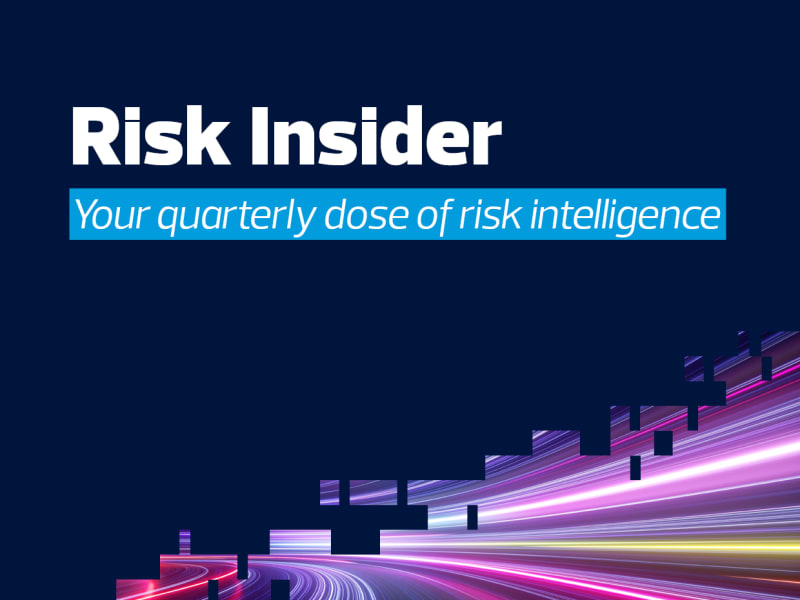31 August 2022
I recently sat down with two ASX listed Board Directors to discuss the board’s role in integrating environmental, social and governance (ESG) criteria into business performance. Overwhelming, we concluded that Boards of Directors can help their companies incorporate elements of ESG into overall strategy by defining short- and long-term objectives and by overseeing how business functions operationalise those priorities. Boards can also define ESG objectives, oversee project plans and help institute accountability measures.
Often, companies want to determine how they fared in a particular sector compared to direct competitors or industry leaders—understanding that every sector has its own KPIs, targets or accounting metrics that they might evaluate. When we see ESG truly ingrained into the overall organisational strategy, it is usually because they blend evaluating how they are faring organisationally with being more aspirational about the things they could do to improve decision-making within the business. Certainly, the recent federal election result has confirmed the mood in the community on this topic.
Even an informed organisation can fall victim to devastating cyber-attacks. Many clients of RSM have made extensive investments and prepared a comprehensive risk prevention strategy. Looking for opportunities, cyber criminals lurk around organisations whilst they are vulnerable. As a matter of priority, reviewing your organisation’s insurance policies and coverage terms is critical. Cybersecurity insurance offers a level of protection for liabilities related to malware. Although costly, insurance is a necessary expenditure for restoration.
Through a recent joint engagement between our Risk Consulting, Corporate Finance and Tax Consulting divisions, we observed first-hand how identifying and assessing technology that can affect capital allocation and growth potential is critical during the diligence process. Technology risks can consume significant post deal investment or impair long term revenue gains.
In this month’s Risk Insider, we share insights on ESG and the Role of Internal Audit, take a good look at Risk and Cyber Security and tackle the burning issue of Technology Due Diligence. Finally, RSM is proud to be a major sponsor of SOPAC®. This year’s theme of “Resilience – Relevance – Reliance”, reflects on the changes which have impacted our world over the last 24 months, and how the profession is transitioning through this change now and preparing for the future.
I encourage you to attend and look for the familiar faces that will be their presenting and welcoming you at the RSM booth.
Warmest regards,
Jean-Marc
![]()
ARTICLES AND INSIGHTS

Supporting Employers to Create Mentally Healthy Workplaces
To help clients understand and fulfil their obligations under WorkSafe Code of Practice for Managing Psychosocial Hazards at Work legislation, the RSM Risk Advisory Services team is partnering with people and culture consultancy Peak Performance International to conduct Mental Health Reviews.

ESG AND THE ROLE OF INTERNAL AUDIT
Ken De Negri has published his second whitepaper with the IIA Australia on 'ESG and the Role of Internal Audit' to build on his first paper 'The Benefits of Addressing ESG Risk'. This white paper explores the role internal audit can play by developing, driving, supporting and assuring growth of ESG, and how this contribution can enhance the environment, our society and the global landscape as a whole.
Read the full white paper here >>

TECHNOLOGY DUE DILIGENCE
For private equity and corporate acquirers, identifying and assessing technology that can affect capital allocation and growth potential is critical during the diligence process. Technology risks can consume significant post deal investment or impair long term revenue gains.
Find out if you could benefit from technology due diligence here>>

NOW IS THE TIME FOR RISK AND CYBER SECURITY TO WORK CLOSER TOGETHER
Having worked across all of Asia Pacific in previous roles, RSM's cybersecurity and privacy specialist Ashwin Pal has seen and experienced how things are done broadly within the region. One of the things that have cropped up a few times is the apparent divide between risk and cyber security. Risk and cyber security should work closer together so that cyber security risks are appropriately understood, documented, prioritised, and treated.
Read more >>

SHINING A LIGHT ON YOUR WORKPLACE CULTURE
Countless studies have proven the benefits that great workplace culture can have on staff retention, productivity, and even revenue. Find out what a cultural audit is as well as how RSM can help here >>
![]()
EVENTS AND SPONSORSHIPS

SOPAC 2022
22 - 24 JUNE 2022 | ICC SYDNEY
RSM Risk Advisory team is a major sponsor at this years SOPAC event. We will be hosting the Wellness Centre, so please pop over to booths 14-16 for a chat, massage and/or healthy treat.
SECTOR SPOTLIGHT - HEALTH
CARE PLAN FOR OUR HOSPITAL NETWORK
 May 2022
May 2022
Australia’s Hospital network has rallied over the last two years to navigate the challenges of responding to the pandemic. Our health network has put caring for our community first and themselves last. Now it is time for implementing a care plan for our hospital network.
Our Health network are presenting with the following symptoms:
- Higher levels of acuity
- Patients are presenting to Emergency Department with more acute conditions, the consequential impact of avoiding healthcare settings during the height of the pandemic (and lockdowns).
- Australia's ageing population, the increasing incidence of chronic diseases and rising rates of obesity are forecast to drive higher demand for public hospitals over the next five years.
- A slow decline in private health insurance membership among patients will likely place a greater burden on public hospitals.
- Despite efficiency improvements over the past five years, public hospitals have struggled to keep up with increasing patient demand for more complex health issues
- Additional resources and often more expensive resources are required to treat patients with higher levels of acuity.
What we have observed: | Implications: |
|---|---|
Higher levels of acuity
|
|
New and/or modified processes
|
|
People
|
|
Systems
|
|
QUESTIONS THAT COME TO MIND: (testing)
- What care and supports will be provided to our hospitals, to ensure their long term sustainability?
- How will the politics playout – real tangible and sustainable support or political spin that results in problem/cost shifting to our hospitals
There are many challenges ahead, but the resilience and shear determination of our health sector suggest that we are poised for more change. COVID helped expedite change as seen by the prevalence of telehealth and remote monitoring of patients grow exponentially during the pandemic.
What care plan does Australia have install for our hospital network to ensure we are ready to face whatever the next challenge that comes our way?
IBISWorld Industry Report: Public General Hospitals in Australia (dated February 2022)
![]()
Request for Tender: IT&C Products, Services & Consulting (T1.15-2) (LGP Contract)
RSM Australia has been added to the panel across Cybersecurity and Professional Services. We can now qualified and vetted to assist Local Government Agencies on the below categories:
Category 3 – Cybersecurity
Subcategory 1 - Cloud Security
Subcategory 3 - Cyber Capability and Education
Subcategory 7 - Security Testing
Subcategory 8 - Network Security
Subcategory 9 - Application Security
Subcategory 10 - Cyber Risk and Compliance
Category 13 - Professional Services
Subcategory 1 - Specialist consulting & advisory
Subcategory 1 - Specialist consulting & advisory
Subcategory 4 - Data Analytics/BI Service
Subcategory 6 – Benchmarking.
Want to keep reading? View the past editions of Risk Insider here >>




